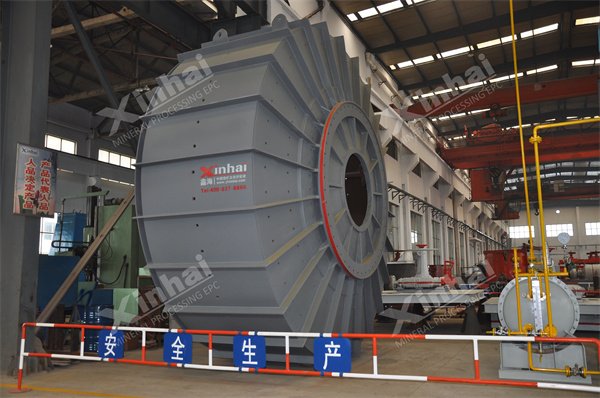Ball mills and autogenous mills are commonly used equipment in the milling stage of ore processing plants. In recent years, many plants have achieved good milling effects using autogenous mills, improving economic indicators. However, autogenous mills are not suitable for all ores. So, how do we choose? This article provides a comparison from the perspectives of process and economic indicators, helping you understand better!

Based on domestic and international production practices, the advantages and disadvantages of the autogenous milling process compared to the conventional milling process can be summarized as follows:
(1) It saves intermediate and fine crushing operations, simplifying the process and improving labor productivity.
(2) Autogenous mills have a certain selective crushing effect, and useful minerals may dissociate at the interfaces. Reports suggest that the concentrate's iron grade in the autogenous milling process is 0.5-1.5% higher than in conventional milling processes.
(3) Not every ore is suitable for autogenous milling operations. Ores suitable for autogenous milling must be capable of forming a sufficient amount of media during the autogenous process. According to experience, ores suitable for wet autogenous milling have a Mohs hardness of 6-12. When dealing with high clay content ores, washing operations can be avoided, significantly simplifying the crushing and milling process.
(4) Autogenous mill production fluctuates significantly with changes in ore properties. According to statistics, the fluctuation range of autogenous mill production is between 25% and 50%, which is unfavorable for sorting operations, especially flotation. To mitigate the impact of ore property fluctuations on autogenous mill production, large ore stacks are often set up in mining areas to neutralize and homogenize the ore.
(5) Autogenous milling has a lower operation rate, generally 78-88%, which is 6-10% lower than conventional milling processes, mainly due to the shorter lining plate life of autogenous mills.
(6) The production cost of the autogenous milling process has pros and cons. The advantage is the saving of steel balls, but the downside is that the lining plate consumption and power consumption are higher than conventional milling processes. Typically, its power consumption is 10-35% higher than the conventional process, consuming an additional 2-5 kWh per ton of ore processed.
(7) The material level in autogenous mills has a significant impact on production, and it should be strictly controlled to avoid significant fluctuations. To achieve this, automatic control is essential, particularly for semi-autogenous mills, as maintaining an appropriate material level not only ensures high production from autogenous mills but also reduces the impact of steel balls on the lining plate, thereby reducing the consumption of lining plates and steel balls.
In summary, when choosing a crushing and milling process, factors such as ore deposit size, ore properties, beneficiation plant scale, and regional conditions should be comprehensively considered. Their infrastructure investment and production costs should be compared, and the final decision should be made based on these factors.
In general, the conventional process can be applied to ores except those with high clay content and large humidity, especially with the gradual maturity and widespread application of ultrafine crushers, which significantly reduce the production costs of ball mills. Autogenous milling processes have many serious drawbacks; therefore, in the past decade, both domestically and internationally, there has been a tendency not to prioritize autogenous milling processes. However, for processing ores with high clay content, autogenous and semi-autogenous milling have distinct advantages.
Regarding the economic and technical indicators of the autogenous milling process compared to the conventional milling process, the comparison primarily focuses on infrastructure investment and production costs. Generally, if the autogenous milling process eliminates intermediate and fine crushing operations, the cost of buildings and structures is 30-40% lower than the conventional process, and the overall infrastructure investment can be reduced by 15-25%. If dealing with clay-containing ores requires additional washing operations in the conventional process,then the autogenous milling solution is more advantageous.